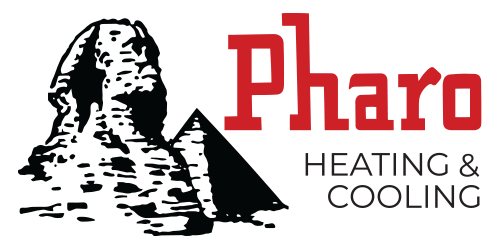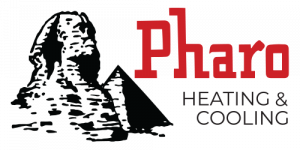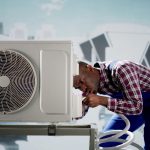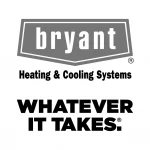The Hidden Climate Control Manual for Your Budget: A Cost-Benefit Analysis of HVAC Upgrades
If you’re packing a winter wardrobe that could rival the durability of a polar bear’s coat, you’re likely a Wisconsinite, battling the cold winds with a steely resolve.
But inside the home, where the bite of winter could seemingly defy the laws of thermodynamics, your HVAC system is your knight in shining armor for heating and cooling— or at least, that’s what you hope it is.
As the seasons shift and utility bills oscillate almost as drastically as the weather, you find yourself perusing the heap of HVAC upgrade options with a niggling concern for your wallet.
This article is a comprehensive guide for Wisconsin residents, melding practical advice with a cost-benefit approach to HVAC upgrades.
The Heat is On: Understanding Wisconsin’s HVAC Necessities
Wisconsin’s climate can be, to put it mildly, diverse. From the temperate breezes of spring to the sweltering highs of summer, and the sub-zero ambushes of winter, your HVAC system is a year-round workhorse. Thus, any homeowner must grasp the specific demands of their location before plunging into the upgrade quagmire.
The Chilling Effect of Winter
Wisconsin’s winters are infamous — if not for the chill they carry, then for their perseverance. Efficient heating systems are not a luxury but a non-negotiable comfort. In older homes, this often necessitates an assessment of both insulation and the heating system itself.
The Summer Swelter
Conversely, Wisconsin’s summers can be occasionally unpleasant. When the hot, humid air rolls in, air conditioning isn’t just a luxury; it’s a critical element for maintaining health and comfort in high-humidity seasons.
Dollars and Degrees: The Cost of Comfort
Investing in an HVAC upgrade is like a chess match with your future utility bills. Here we discuss the financial facets that play a critical role in the decision-making process.
Upfront Costs of HVAC Systems
When considering HVAC upgrades, it’s essential to break down the initial investment required for various types of systems. The cost of simple a furnace or AC system can start at around $4,000 for basic models, suitable for smaller homes or apartments.
Moving up the scale, a mid-range system may range between $5,000 to $10,000, depending on the size of your home and the system’s efficiency ratings.
For those looking towards the higher end of the spectrum, full smart home integrated HVAC systems, which allow for remote control and monitoring of your heating and cooling, can cost upwards of $10,000-20,000.
These higher end systems offer the pinnacle of convenience and energy efficiency, adapting to your lifestyle patterns to optimize temperature and energy use throughout your home.
It’s important to note that these prices are merely starting points. Factors such as the complexity of installation, specific brand/model choices, and additional features (like air purifiers or humidifiers) can influence the final cost.
Nonetheless, understanding these baseline figures provides a framework for budgeting and planning your HVAC upgrade.
Long-term Financial Implications
While the initial sticker shock of HVAC upgrades can be daunting, it’s important to factor in the long-term financial implications of your investment.
Over time, a more efficient system can lead to substantial savings on your energy bills, especially during the peak usage months of Wisconsin’s harsh winters and humid summers.
Modern, energy-efficient HVAC systems are designed to consume less power while providing a higher level of comfort, thus reducing the overall cost of heating and cooling your home.
Another significant aspect to consider is the potential increase in your property’s value. Upgrading to a high-efficiency HVAC system can make your home more attractive to prospective buyers.
This is because energy efficiency is becoming a growing priority for homebuyers, who are looking to minimize their environmental impact and utility costs.
Furthermore, the durability and longevity of newer HVAC systems mean that they require less maintenance and are less likely to need costly repairs. This can further contribute to your long-term savings, making the initial investment more palatable when considered in the context of potential future expenses.
Wisconsin residents should also investigate local and federal incentives for installing energy-efficient systems. Rebates, tax credits, and other programs can offset a portion of the upfront costs, improving the cost-effectiveness of an HVAC upgrade.
By understanding these opportunities, homeowners can make a more informed decision that takes into account both the immediate and long-term financial impacts of their HVAC choices.
The Great Energy Debate: Efficiency Efficacies
Energy efficiency is the mantra of the modern HVAC industry. Here we’ll help you understand how to understand the different efficiency ratings.
Understanding SEER and AFUE Ratings
SEER (Seasonal Energy Efficiency Ratio) and AFUE (Annual Fuel Utilization Efficiency) serve as the primary metrics used to gauge the efficiency of cooling and heating systems. SEER specifically measures the efficiency of air conditioning units, while AFUE evaluates the efficiency of furnaces and boilers by considering the amount of fuel that is successfully converted into heat.
These yardsticks are crucial in determining the cost-effectiveness and environmental impact of HVAC systems, guiding consumers and industry professionals in making informed decisions for optimal energy efficiency. The higher the SEER or AFUE rating, the more efficient the system is.
Environmental Impacts
Today’s HVAC systems are designed to be more efficient and use more environmentally friendly components. Furnaces are reaching AFUE ratings of up to 98%, while AC systems are coming in at 20+ SEER. These are vast improvements over systems from just 10 years ago.
We are also going to be seeing new A2L refrigerants hitting the market between 2024 to 2025, which will combat Global Warming Potential (GWP). This is a win-win for consumers and the Earth.
The Human Element: Finding the Right HVAC Contractor
Navigating the maze of HVAC upgrades requires a trusted guide — the right contractor. Choosing the right professional can make or break your upgrade experience, and we’ll provide tips on how to vet and select the best fit for your project.
Certifications and Experience
Look for contractors with the proper certifications and a depth of experience in Wisconsin’s uniquely demanding climate.
Customer Reviews and Testimonials
The best insight into a contractor’s performance often comes from past clients. Choose a Contractor with a fair number of positive reviews, and one that offers reliable services in various projects, while demonstrating a track record of client satisfaction and quality work.
The Verdict: Making the Decision to Upgrade
Armed with a thorough understanding of the cost-benefit analysis of HVAC upgrades in the Wisconsin climate, it’s time to make a decision. We’ll explore the final factors that can help you seal the deal on an upgrade.
Balancing Quality with Cost
While it’s tempting to cut corners to save a little money, a balance between cost and quality is essential to ensure that your upgrade provides the expected benefits without unexpected issues or breakdowns.
Future-proofing Your Home
Consider how your upgrade aligns with future trends in HVAC technology. Planning for the long term means not only looking at your needs in the next couple of years but also considering how your home will fare in the face of evolving environmental standards.
The Last Word on Understanding HVAC Upgrades in Wisconsin
In closing, we hope this deep dive into the world of HVAC upgrades has equipped you with the tools to tackle this important facet of homeownership.
Whether your ultimate decision leans towards a more efficient furnace to brave the winter nights or a smart thermostat to dance with the summer sun, may your choice lead to warm winters, cool summers, and a wallet that breathes a sigh of relief with every utility bill that passes through your door.
Ready to transform your home’s comfort and efficiency?
Pharo Heating & Cooling is at your service! With decades of experience navigating Wisconsin’s extreme climates, we’re here to guide you through every step of your HVAC upgrade in Madison, WI.
From custom assessments to full installations and smart technology integration, our team guarantees a seamless experience and lasting solutions.
Don’t wait for the next season to catch you off guard. Call us today at (608) 849-5410, to schedule your consultation and take the first step towards optimal home comfort and energy savings. Your comfort is our legacy.










